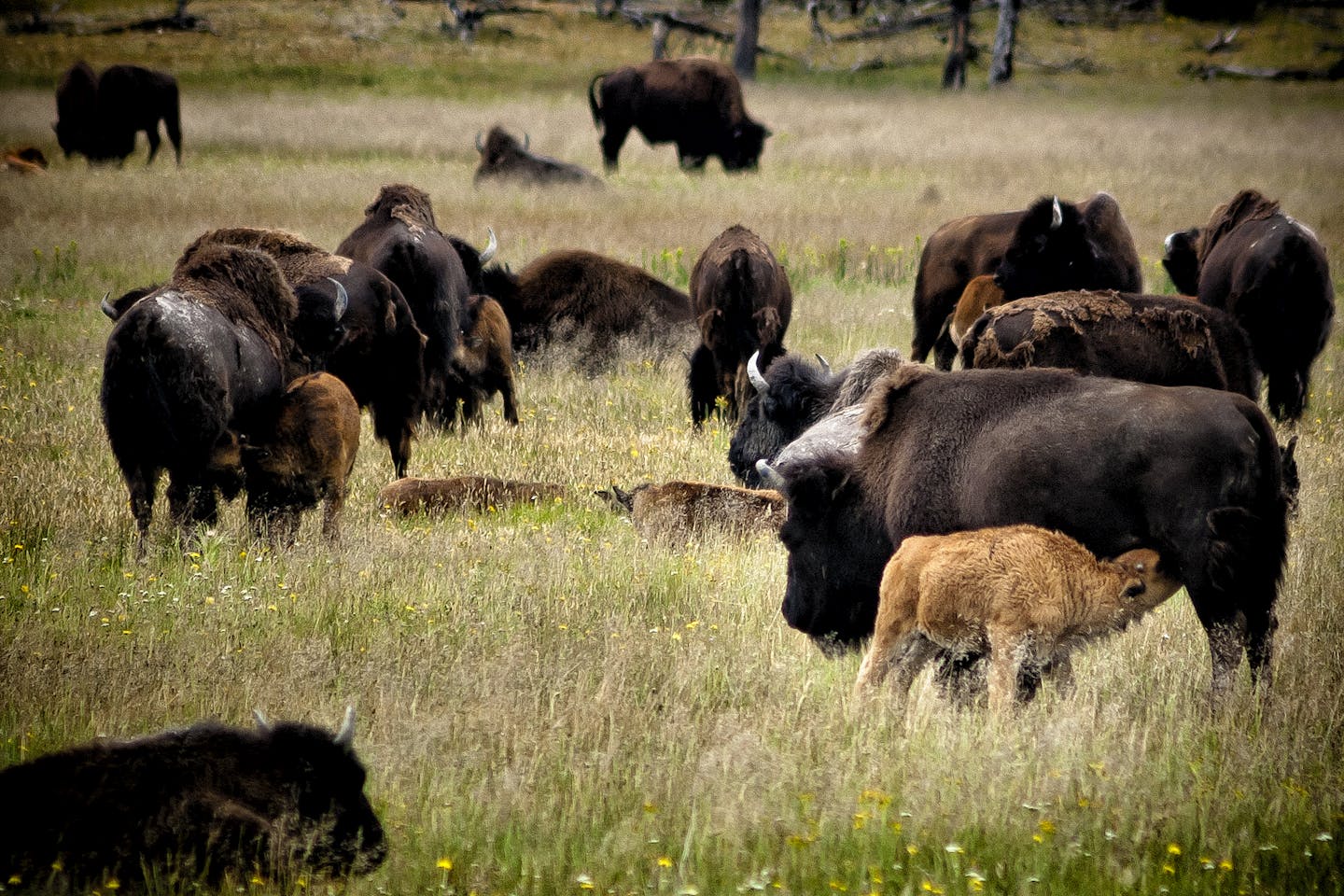The return of the bison
On October 30, 2020, against the backdrop of a bright blue sky, 100 bison were released. The pounding of their hooves on the golden grasslands was met with cheers and traditional vocalizations of the Lakota people of South Dakota’s Rosebud reservation. It is the return of the bison to this region since they were almost wiped out more than a century ago.
The herd’s return to the North American Great Plains is a collaborative effort. It was initiated by the Rosebud Economic Development Corporation (REDCO) and the Rosebud Sioux Tribes’ land management corporation announcing they plan to build a 1,500-head herd on 28,000 acres of tribal land by 2025. This was assisted by a ten-year project announced in May by the U.S. Department of the Interior to expand bison conservation efforts and by WWF who has invested more than $2.2 million in bison restoration. Together, it is the largest Indigenous-owned and managed herd on the continent. The Rosebud Sioux expect that the project will be financially self-sustainable by creating jobs and restoring ecological balance to the area.
Tens of millions of buffalo used to roam freely in North America, ranging from Northern Canada all the way into Mexico. The Great Plains — North Dakota, South Dakota, Nebraska, Kansas, Oklahoma, Wyoming, and Montana — is where they were most prevalent until the late 1800’s. As the United States expanded further west, settlers began to mass slaughter of the bison in order to make room and more nefariously, to deplete the Indigenous people’s main food source. The American bison population decreased rapidly to only a few hundred.
“The sacred relationship between Native nation communities and the buffalo is part of a shared story of strength, resilience and economic revitalization,” said Wizipan Little Elk, CEO of REDCO. The spoken tradition of the Lakota Sioux tells how their tribe and the buffalo were once one people living in the Wind Cave on the edge of the Black Hills. With mutual respect, the Lakota say the buffalo have given their meat and hides to help them survive for hundreds of years.
Today, Rosebud Sioux Tribe gives back to the bison the Wolakota Buffalo Range, hoping to further conservation and honor the tradition of their ancestors by restoring the sacred animals to their homeland.


